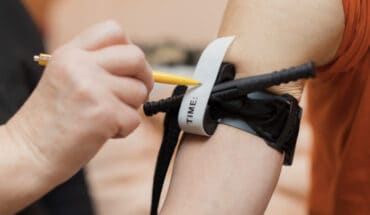Are second-hand toys safe? How to protect your child: A study, published (Jan 2018) in the Environmental Science & Technology journal, looked at 200 toys taken from homes, charities and second-hand shops and nurseries in the South-West of England.
They were looking to establish if older, plastic second-hand toys could pose a safety risk to children. They were checking for the presence of 9 hazardous chemicals, and of particular concern were chronium, selenium and lead.
20 of the 200 toys were found to contain all 9 of the chemicals tested – some with levels that would fail to meet safety standards set out by the European Council’s Toy Safety Directive. (The guidelines on chemicals in toys have been in effect since 2013.)
Researchers stated that if one of these toys were to be chewed repeatedly over a period of time, the exposure could be “chronically toxic” to a child.
There were no safety concerns about handling the toys. The potential risks were from chewing and children putting them in their mouths.
Advice when buying second-hand toys and playing with Granny’s heirlooms:
- Older toys have not been subject to today’s rigorous safety checks and regulations. They won’t have age recommendations either.
- Avoid old LEGO bricks from the ’70s and ’80s. Dr Andrew Turner, from the University of Portsmouth, found them of major concern in his study. Particularly red, yellow and black bricks which contained high levels of the hazardous chemicals.
- Be careful buying and toy with small parts. Pull at the parts to see if they’re coming loose. Be particularly careful with eyes in soft toys.
- Avoid old painted toys in case the paint is lead-based. If the paint is flaking, don’t get it out to play with.
- Toys wearing clothes are unlikely to be flame resistant.
- Be cautious of any toy that needs a battery to operate. Check you can access the battery compartment to change the batteries. If there is a screw securing the battery compartment, ensure that still turns and is not rusty or rounded off. If there is any sign of battery corrosion, throw the toy away.
The child accident prevention trust has stated that “The number of dangerous toys sold online to unsuspecting families is on the increase”. Dangers of buying toys online can include:
- “Magnets so strong they can burn through a child’s gut if swallowed
- Long cords that can strangle a child
- Dangerous levels of chemicals
- Small parts that can choke or suffocate
- Easy access to button batteries that can get stuck in a child’s food pipe, cause internal bleeding and even death.”
- What is a seizure? - 13th March 2025
- Febrile Convulsions and Seizures in Children - 13th March 2025
- Why women are less likely to receive CPR or survive cardiac arrest - 6th March 2025







